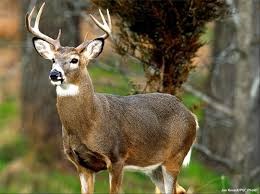During February the East Algoma Detachment of the OPP has investigated 24 motor vehicle collisions and six of those involved deer.
The OPP is beginning to see a high presence of deer on our roadways including the Trans-Canada Highway.
As spring nears, deer are moving as the snow disappears and tend to gravitate near roadway shoulders for the first greening grass and remaining roadway salt.
Deer seldom run alone. If you see one deer, others are likely nearby.
The OPP would like to remind motorists of a few simple tips, which may reduce the chance of becoming involved in a deer collision.
- Always wear your seat belt.
- Be especially aware during the morning and afternoon as deer tend to be more active during the early morning hours and late afternoon hours year-round. They are moving between evening feeding areas and daytime bedding sites.
- Elevate your deer awareness at locations with deer crossing signs. Deer crossing signs indicate areas where heavily used deer trails cross roadways. Slow down and watch for the eye-shine of deer near the roadway edges.
- When driving at night, use high beam headlights when there is no oncoming traffic. The high beams will better illuminate the eye-shine of deer on or near the road.
- If a deer or any other animal jumps out in front of your motor vehicle, brake firmly to slow down safely. Stay in your lane and never swerve suddenly. Swerving could cause you to lose control and result in a more serious collision.
- Do not rely on devices such as deer whistles, deer fences or reflectors to scare away deer.
If you do hit a deer, stay calm and pull off to the side of the road as far as possible and activate your hazard lights. Contact OPP at 1-888-310-1122 or call 911 if there are any injuries.



.png;w=120;h=80;mode=crop)